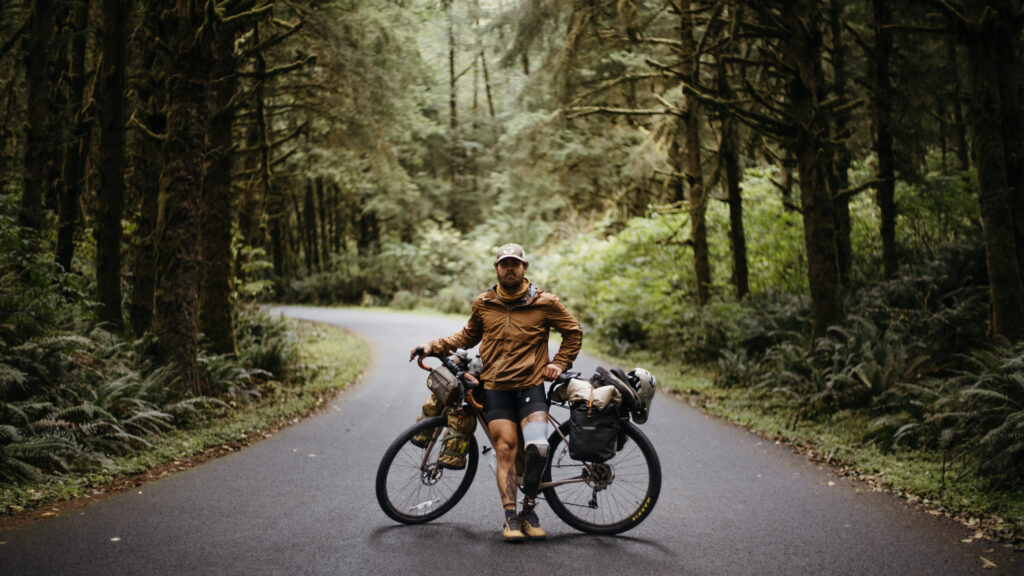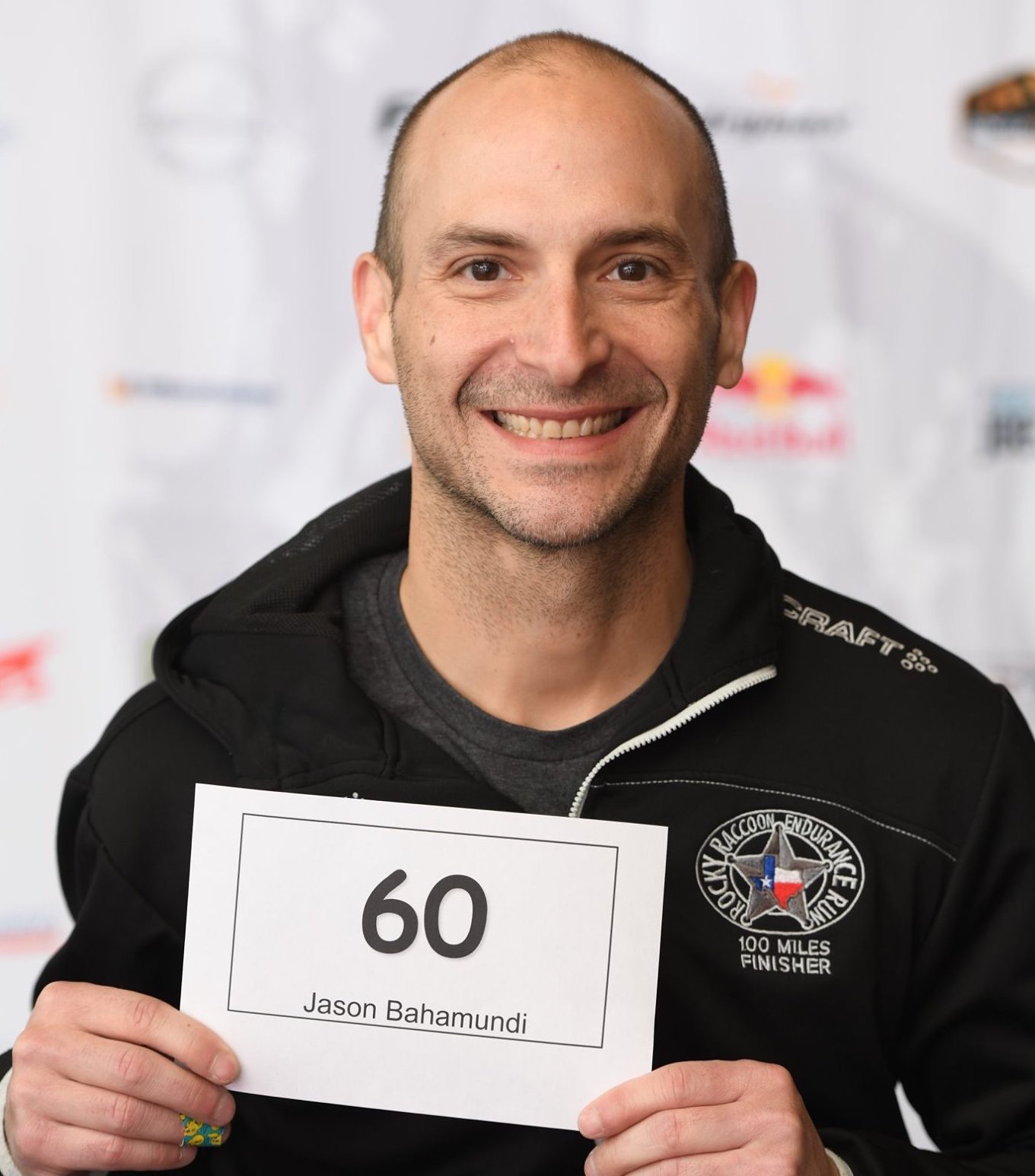Sponsored by
A Navy Officer Becomes An Endurance Trailblazer

Sam Maddaus knew that team sports weren’t his thing. That was long before he would become an endurance athlete with an amputation success story. When you have hiked 2,650 miles or biked 14,000 more, or both as Sam has, you forget about the things you cannot do. Your perspective shifts to the things you’ve done to help you do the things that seem harder.
“I couldn’t catch a ball or dribble to save my life,” he jokes. But give him a swimming lane or a pair of boxing gloves, and suddenly things clicked. “I could just kind of grind my way through it,” he says.
That grit stuck with him.
Individual sports gave Sam the freedom to push himself without worrying about letting a team down. That mindset carried him all the way to the Naval Academy, spurred by a documentary on Navy SEALs that lit a fire in his teenage brain. “It just seemed like the most badass thing in the world,” he says. But there was a catch. His dad had one stipulation: “If you’re joining, you’re going in as an officer.”
So Sam did just that. He graduated from the Naval Academy in 2015, was commissioned as a surface warfare officer, and soon found himself in San Diego running and heading to the coast of Somalia to run anti-piracy operations. “It wasn’t hot engagements or anything,” he says, “but it was a good job.”
Still, the Navy wasn’t a perfect fit. “I’ve got authority issues,” he laughs. “And way too many rules.”
The Crash That Changed Everything
After returning from deployment in 2017, Sam admits he wasn’t in a good place. “I was partying too much, disconnected,” he says. One night, while speeding on a motorcycle, Sam was hit. The accident led to the amputation of his leg and two grueling years of rehabilitation filled with recurring infections, surgeries, and prosthetic issues. Despite this scenario, the idea of an amputation success story, let alone one that involved being an endurance athlete, wasn’t at the forefront of Sam’s mind.
“Some days I could walk a mile and be in agony,” he explains. “Other days, I could barely get out of bed.”
The physical pain was matched by a mental fog. “It wasn’t ‘why me?’ I had accepted it. But it was more of a thought of will anything ever feel good again?”
During recovery, Sam got involved in a prosthetics project in Guatemala, introduced to the opportunity by a Navy prosthetician he’d befriended. What was supposed to be a temporary escape during COVID turned into something deeper.
He was helping other people who had no access to prosthetics or rehab, especially young men just like him. “That gave me a different perspective,” Sam says. “I’m frustrated with my situation, but I’m also lucky.”
Perspective is everything. I think it is the one thing that I have a talent for that allows me to breathe easier, most days. This doesn’t mean I don’t get anxious or stressed. Instead, I have learned to be patient and find the perspective that gives me a satisfying answer.
Finding the Trail
While wandering through Nicaragua, still unsure of his future, Sam struck up a conversation over coffee with a Dutch traveler. That traveler casually mentioned the Pacific Crest Trail, a 2,650-mile hike from the Mexican border to Canada. For Sam, it was like a lightning bolt. “I’d been dreaming about that trail since I was 15,” he says.
That same day, he applied for a hiking permit and called his prosthetician to start prepping a new leg.
At that point, Sam couldn’t walk more than a few miles at a time. But his mind was made up. “I told myself, I’ll figure it out. Even if I only hike five miles a day at the start, I’ll get there.”
Six months later, on the dot, he did.
I’ll figure it out. This is something that I repeat to myself on a regular basis. I don’t have all the answers but I know that there is an answer. Throwing my hands in the air and being discouraged is not for me. I contemplate, sometimes too much, until I feel I’ve exhausted every avenue. If by then I still don’t have an answer, then I move on.
When 40 Miles Feels Like 4,000
Week two on the trail nearly ended everything. “It was hot, the desert was brutal, and the skin on my stump was cracking and bleeding from the prosthetic,” he recalls. “I was 40 miles in and seriously thought about quitting.”
But he didn’t. He kept going. Tree by tree, step by step. “My dad used to say, just make it to the next tree, then the next,” Sam says. “That kept running through my head.”
The hike became more than a challenge. It became a form of therapy. No social media posts. No audience. Just Sam and the trail. “I wasn’t trying to prove anything to anyone. I just wanted to be out there under my own power.”
When was the last time you did something for yourself and not for social media posting. How often do people do this today versus 5 years or 10 years ago?
Trading Boots for Bike Tires
Midway through the PCT, Sam watched a YouTube video of a cyclist who rode from Vancouver to Argentina. The seed was planted. By the time he finished his hike, Sam was already planning the next thing.
He worked as a server and personal trainer in Minneapolis to save money. During that time, he trained a woman who had lost mobility due to trauma and infection. “We started working together three times a week, and her world opened up,” he says. That woman later climbed a mountain in Alaska, where her late husband had proposed, thanks to Sam’s help.
Then came the ride: Alaska to Argentina. Twenty-one months. Fourteen thousand miles. And, naturally, plenty of falls.
“I didn’t even have a bike until I was 14,” Sam says, laughing. “At first I rode with flat pedals, but my prosthetic would bounce off. Clip-ins changed my life.”
Despite countless wipeouts, including the last day, the ride gave him something new. Freedom without pain. “It was actually more comfortable than hiking,” he says. “Less impact on the limb.”
Finding Peace on the Pedals
Some of Sam’s favorite memories from the ride aren’t big, dramatic moments. “It’s the quiet ones,” he says. “Like in the Yukon, after four days of freezing rain and wind, the sun hit my face and suddenly everything felt okay.”
Those little wins added up. “It’s not that it’s not hard. It is. But I’ve seen hard before,” he says. “Now I know I can handle it.”
That belief carried him through two massive undertakings—and now it’s shaping what’s next.
I believe that doing hard things gives us perspective. It also allows us to embrace the little things and understand that those are where the memories are made.
Looking Ahead: Running, Mentoring, and More
Sam is getting fitted for a running blade and planning a three- to six-month journey on foot. Adding to the success story of an endurance athlete with an amputation is one thing. Adding another story to inspire others, physically challenged or not, is where the magic for Sam is. “I haven’t run in six years,” he says. “But I think I can do it. Even if it’s a slow jog.”
He’s also exploring ways to help others: working with clinics, mentoring young disabled men, and developing a business around physical and mental rehab. “The prosthetic world is something I can actually talk about,” he says. “And it feels good to help.”
When asked if he has a mantra, Sam smiles. “When I was at the Naval Academy, my youngest sister would send letters with Band-Aids that said ‘Just Keep Swimming.’ That’s stuck with me.”
No catchy hashtags. No need to prove anyone wrong. Just Sam, continuing to grind. Because while it might not always feel perfect, “I know I can do the thing,” he says. “That’s all that matters.”
I am often asked why I started Run Tri Bike and the answer is simply, people like Sam. I don’t know that I would ever have met Sam if it weren’t for this company. There are dominos involved in getting to this interview but they don’t topple over without a decision in 2020 to start this company. There is magic in taking risks and betting on yourself.








